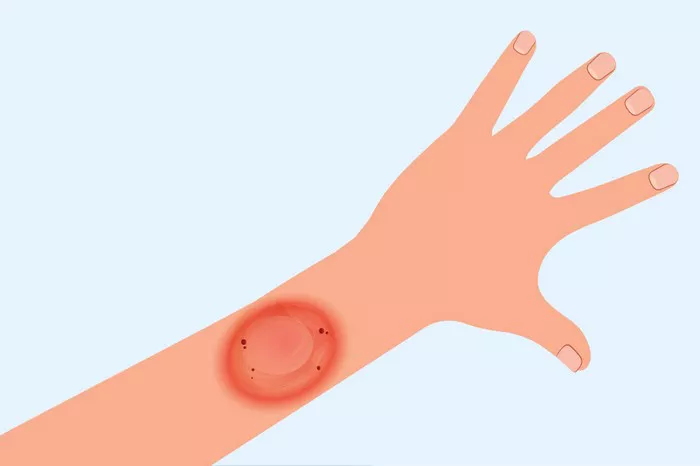Ringworm, also known as dermatophytosis, is a common fungal infection that affects the skin, hair, and nails. Despite its name, ringworm is not caused by a worm but by a group of fungi called dermatophytes. These fungi thrive on keratin, the protein found in the outer layer of the skin, hair, and nails. The infection is characterized by a red, circular rash with a clearer center, often accompanied by itching and discomfort.
Topical treatments are the primary line of defense against ringworm, especially for infections confined to the skin. This article explores the most effective topical treatments available, discussing their mechanisms, usage, efficacy, and safety profiles.
Understanding Ringworm
Causes and Symptoms
Ringworm is primarily caused by three genera of fungi: Trichophyton, Microsporum, and Epidermophyton. These fungi are highly contagious and can be spread through direct contact with an infected person or animal, or by touching contaminated objects and surfaces.
Symptoms of ringworm include:
- Red, circular rash with a clearer center
- Itching and irritation
- Scaling and cracking of the skin
- In more severe cases, blistering and oozing
Diagnosis
A clinical diagnosis of ringworm is usually made based on the characteristic appearance of the rash. However, to confirm the diagnosis, a healthcare provider might take skin scrapings or nail clippings for microscopic examination or culture.
Topical Treatments for Ringworm
Topical antifungal treatments are the cornerstone of ringworm management, particularly for mild to moderate cases. These treatments are applied directly to the affected area and work by inhibiting the growth of the fungi or killing them outright. Here are the best topical treatments available:
1. Clotrimazole
Mechanism of Action
Clotrimazole belongs to the azole class of antifungals. It works by inhibiting the synthesis of ergosterol, a vital component of fungal cell membranes. Without ergosterol, the fungal cell membrane becomes permeable and eventually disintegrates, leading to the death of the fungus.
Usage
Clotrimazole is available in various formulations, including creams, lotions, and solutions. It is typically applied to the affected area twice daily for two to four weeks, or as directed by a healthcare provider.
Efficacy
Studies have shown that clotrimazole is highly effective in treating ringworm, with cure rates exceeding 80% in most cases. Its broad-spectrum activity against dermatophytes makes it a go-to choice for many clinicians.
Safety Profile
Clotrimazole is generally well-tolerated. Side effects are rare but may include mild skin irritation or a burning sensation upon application. It is safe for use in both adults and children.
2. Terbinafine
Mechanism of Action
Terbinafine, an allylamine antifungal, works by inhibiting squalene epoxidase, an enzyme crucial for the synthesis of ergosterol. The inhibition of this enzyme results in the accumulation of squalene, which is toxic to fungal cells, leading to their death.
Usage
Terbinafine is available as a cream, gel, and spray. It is typically applied once or twice daily for one to two weeks. Due to its potency, a shorter treatment duration is often sufficient compared to other antifungals.
Efficacy
Terbinafine is highly effective against dermatophytes, with cure rates often exceeding 90%. Its ability to provide rapid relief makes it a popular choice for treating ringworm.
Safety Profile
Terbinafine is well-tolerated, with side effects including mild irritation, itching, or redness at the application site. It is considered safe for use in adults and children over the age of 12.
3. Miconazole
Mechanism of Action
Miconazole, another azole antifungal, works similarly to clotrimazole by inhibiting ergosterol synthesis. This disrupts the fungal cell membrane, leading to cell death.
Usage
Miconazole is available in various formulations, including creams, powders, and sprays. It is usually applied twice daily for two to four weeks.
Efficacy
Miconazole is effective in treating ringworm, with cure rates ranging from 70% to 85%. It is also effective against a broad spectrum of other fungal infections.
Safety Profile
Miconazole is generally well-tolerated. Side effects are minimal but may include mild burning, itching, or irritation at the application site. It is safe for use in adults and children.
4. Ketoconazole
Mechanism of Action
Ketoconazole, another azole antifungal, works by inhibiting ergosterol synthesis, similar to clotrimazole and miconazole. This disruption in cell membrane integrity leads to fungal cell death.
Usage
Ketoconazole is available in creams, shampoos, and gels. For ringworm, the cream is typically applied once or twice daily for two to four weeks.
SEE ALSO: Why Ringworm Is Round
Efficacy
Ketoconazole is effective against a variety of dermatophytes, with cure rates similar to other azoles. It is particularly useful for treating infections that are resistant to other antifungals.
Safety Profile
Ketoconazole is well-tolerated, with side effects including mild skin irritation and redness. It is considered safe for use in adults and children.
5. Butenafine
Mechanism of Action
Butenafine, an allylamine antifungal like terbinafine, inhibits squalene epoxidase, leading to the accumulation of toxic levels of squalene in fungal cells, causing their death.
Usage
Butenafine is available as a cream. It is typically applied once daily for two weeks or as directed by a healthcare provider.
Efficacy
Butenafine is highly effective against dermatophytes, with cure rates often exceeding 85%. Its ability to penetrate the skin and provide sustained antifungal activity makes it a reliable option.
Safety Profile
Butenafine is generally well-tolerated, with side effects including mild burning or stinging at the application site. It is safe for use in adults and children.
6. Tolnaftate
Mechanism of Action
Tolnaftate works by inhibiting the growth of dermatophytes through interference with the synthesis of sterols, essential components of fungal cell membranes.
Usage
Tolnaftate is available in creams, powders, sprays, and gels. It is typically applied twice daily for two to four weeks.
Efficacy
Tolnaftate is effective against a range of dermatophytes, with cure rates ranging from 70% to 85%. It is particularly useful for preventing the recurrence of infection.
Safety Profile
Tolnaftate is well-tolerated, with side effects including mild irritation or itching at the application site. It is considered safe for use in both adults and children.
7. Ciclopirox
Mechanism of Action
Ciclopirox works by chelating polyvalent cations, disrupting the synthesis of fungal cell membrane components and leading to fungal cell death.
Usage
Ciclopirox is available in creams, gels, and solutions. It is typically applied twice daily for two to four weeks.
Efficacy
Ciclopirox is effective against a variety of dermatophytes, with cure rates comparable to other topical antifungals. It is particularly useful for infections that are resistant to other treatments.
Safety Profile
Ciclopirox is well-tolerated, with side effects including mild burning, itching, or redness at the application site. It is safe for use in adults and children.
Choosing the Right Treatment
Factors to Consider
When choosing a topical treatment for ringworm, several factors should be considered:
- Severity of Infection: Mild to moderate infections typically respond well to topical treatments, while severe or extensive infections may require systemic therapy.
- Location of Infection: Some treatments may be more suitable for specific areas of the body. For example, antifungal shampoos may be preferred for scalp infections.
- Patient Age and Health: Some treatments may be contraindicated in certain populations, such as young children or individuals with specific health conditions.
- Previous Treatment Responses: If a patient has previously used a particular antifungal with success, it may be prudent to use the same treatment again.
Combination Therapy
In some cases, a combination of topical and systemic treatments may be necessary, particularly for extensive or resistant infections. Additionally, combining topical antifungals with other measures, such as keeping the affected area clean and dry, can enhance treatment efficacy.
Preventing Recurrence
Preventing the recurrence of ringworm involves maintaining good hygiene practices, avoiding sharing personal items, and treating pets that may be carriers of the infection. In some cases, prophylactic use of antifungal powders or sprays may be recommended.
Conclusion
Ringworm is a common and treatable fungal infection that can be effectively managed with topical antifungal treatments. Clotrimazole, terbinafine, miconazole, ketoconazole, butenafine, tolnaftate, and ciclopirox are among the best topical treatments available, each with its unique mechanism of action and usage profile. Choosing the right treatment involves considering the severity and location of the infection, patient characteristics, and previous treatment responses. With proper treatment and preventive measures, most cases of ringworm can be successfully resolved, allowing patients to return to their normal activities without discomfort or embarrassment.
Related Topics:


























